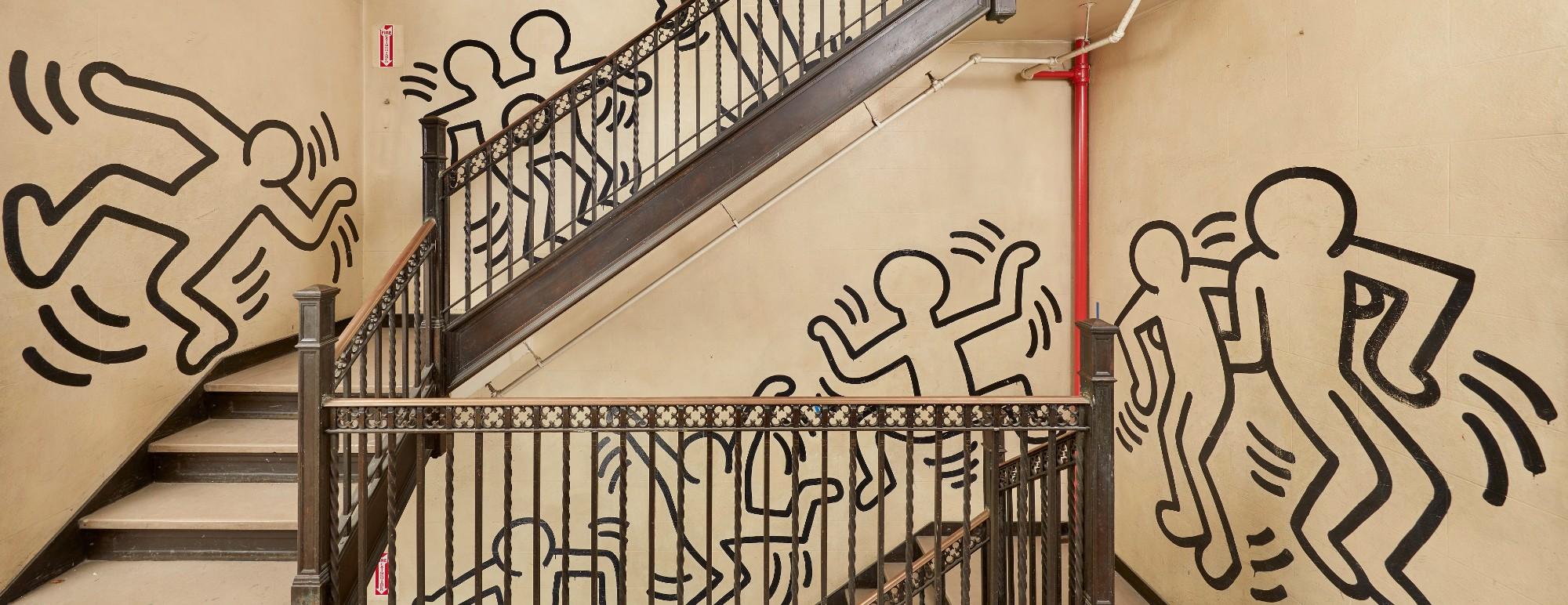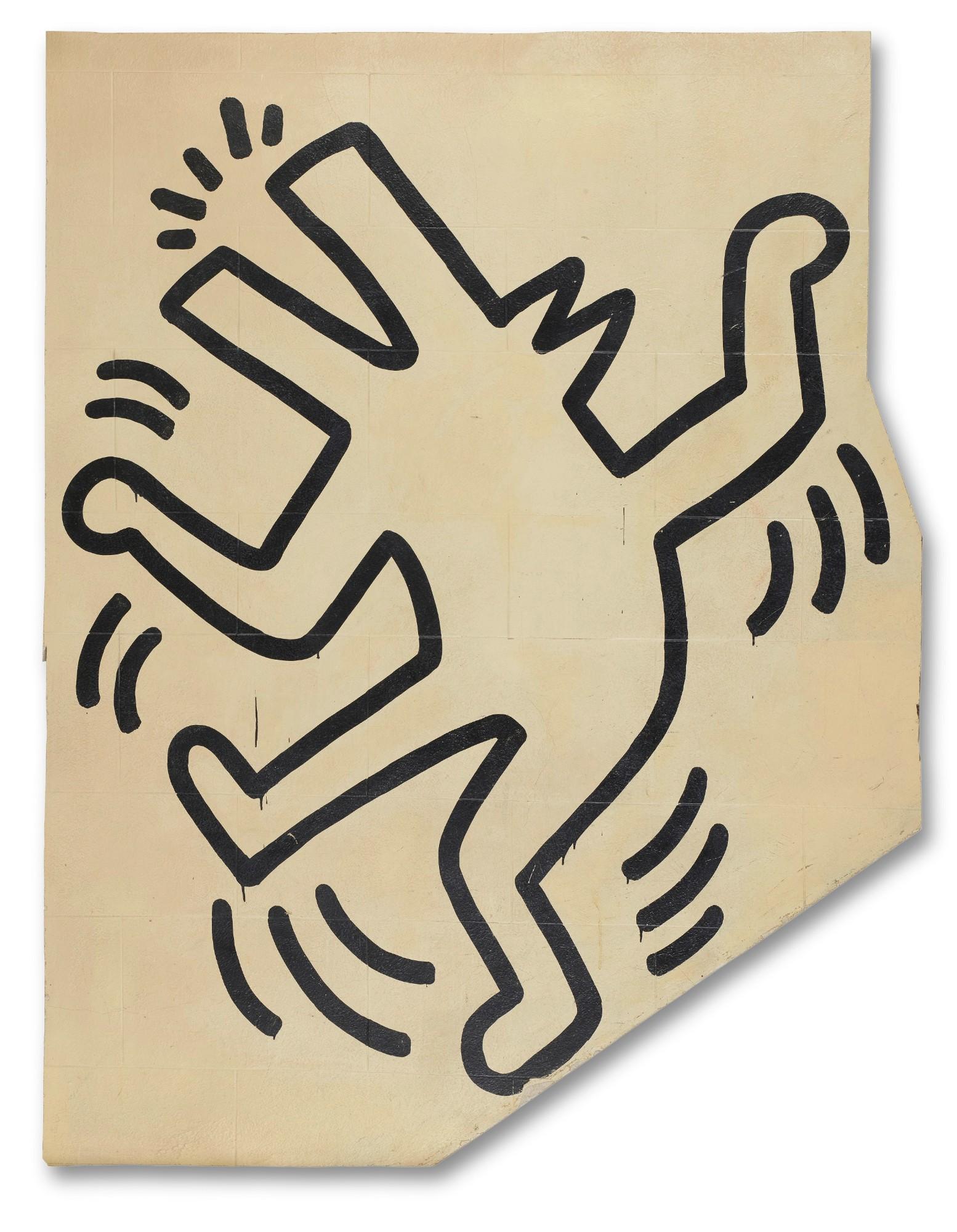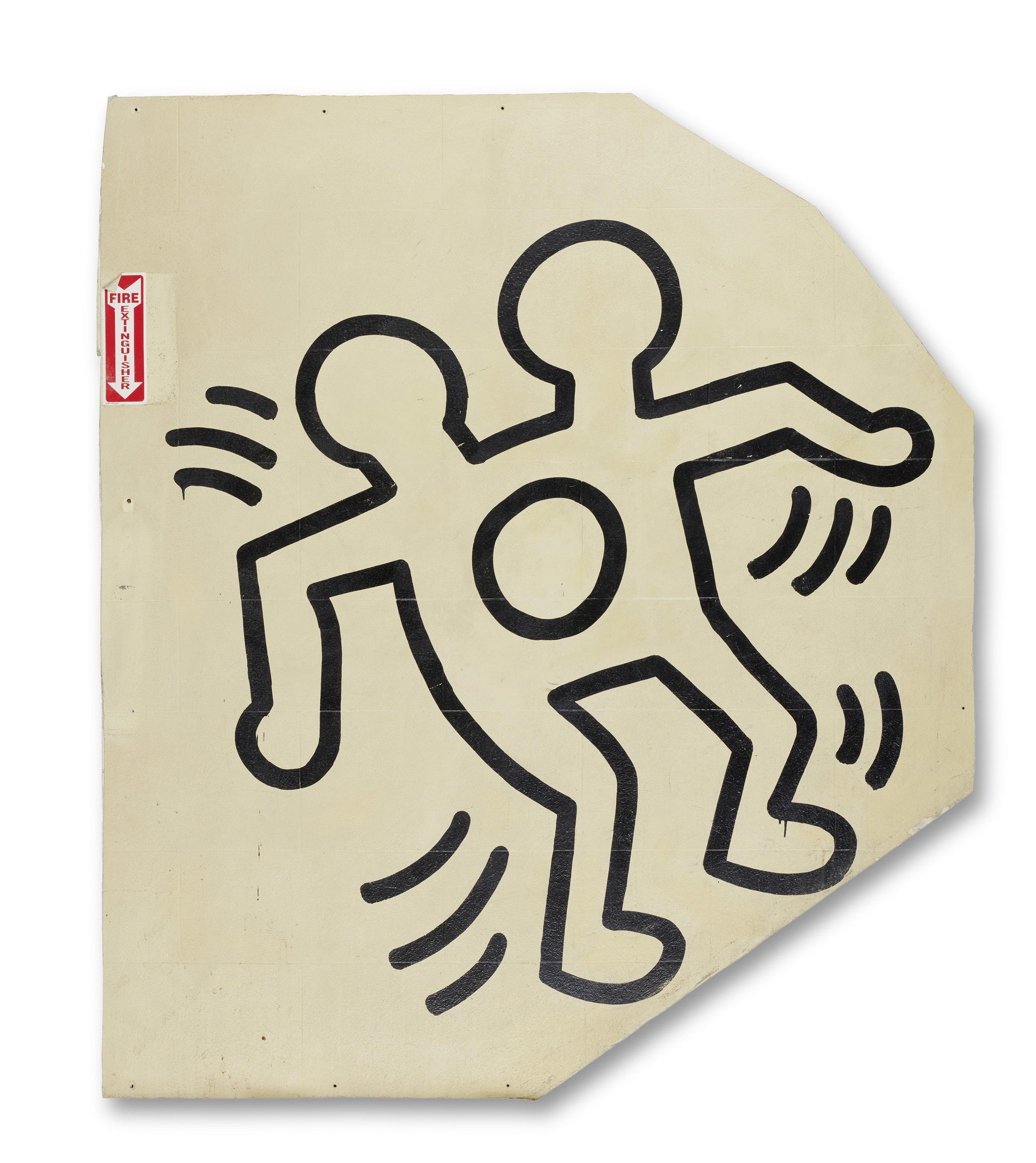Keith Haring and Grace House
Keith Haring (1958-1990) is synonymous with the gritty, hedonistic, boundary-breaking, electric mix that was the downtown New York art scene of the 1980s. Even now in the 21st Century, 1980s New York has been understood and venerated as an artistic Golden Age, one which produced titans who continue to hold value and shape the international art world and market. Keith Haring was one of those key figures. His artwork, with its deceptively simple, bold lines, and dynamic figures in motion, instantly grabbed the world's attention. By expressing concepts of birth, death, sex and war, Haring's images have become widely recognized and celebrated internationally.
Haring was a regular fixture on the vibrant, no holds barred lower Manhattan club scene. Here he was mixing with the reigning kings of the art world, including Andy Warhol, Jean Michel Basquiat, and Kenny Scharf. One evening, Haring met two members of the Catholic Youth Organization, Benny Soto and David Almodovar, and they formed a tight friendship. Both went to work for Haring, Soto as an art assistant and Almodovar later managing Haring's Pop Shop in SoHo.
This friendship led to an invitation to Grace House, where Haring agreed to paint its stairwell. He knew exactly what he wanted to do: impressively, he completed the mural without working out the composition in a sketch or an underpainting in advance. The spontaneous mural begins with the Radiant Baby and ends at the third-floor landing with a figure that seems to dive into a doorway, with only its lower half visible.































